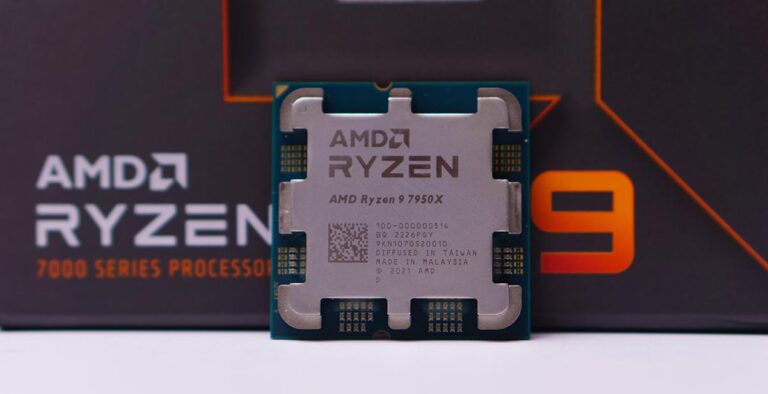
AMD Zen 4 processors are finally here and leading the charge is the AMD Ryzen 9 7950X. The company now touts 13% IPC uplift and 29% better single-threaded performance on the Ryzen 7000 series. While it hasn’t departed from the classic design unlike its competitor, it has a lot backing it to improve performance. It packs a whole array of changes including the move to an LGA socket, more L2 and L3 cache, AVX-512 instruction set, higher clock speeds, a new platform with DDR5 and PCIe 5.0 support, and higher TDP.

AMD Ryzen 7000 series CPUs are powered by the Zen 4 architecture previously codenamed Raphael. They have done a ton of work this generation to get a 13% IPC uplift and 29% single-threaded improvement over Zen 3. Zen 4 CPUs also come with a lot more L2 and L3 cache as well as the addition of AVX-512 instruction set compared to last generation’s processors.

At launch, AMD introduced four variants of the Zen 4 architecture – the Ryzen 9 7950X, Ryzen 9 7900X, Ryzen 7 7700X, and Ryzen 5 7600X. Interestingly, the Ryzen 7 7800X seems to be missing. We expect that the brand will be introducing a Ryzen 7 7800X3D sometime in the future like what they did to the 5800X3D, which was the first consumer CPU from AMD to come with a stacked L3 cache.
Core and thread count are still the same on the Ryzen 7000 series. The 7950X, 7900X, 7700X and 7600X packing 16 cores, 32 threads; 12 cores, 24 threads; 8-cores, 16 threads; and 6 cores, 12 threads, respectively. Performance is largely equal amongst the cores and they are not copying Intel’s E-Core and P-Core setup.
| Model | Ryzen 9 7950X | Ryzen 9 7900X | Ryzen 7 7700X | Ryzen 5 7600X |
| Architecture | Zen 4 (Raphael) | |||
| Core Count | 16-cores | 12-cores | 8-cores | 6-cores |
| Thread Count | 32-threads | 24-threads | 16-threads | 12-threads |
| Base Clock | 4.5GHz | 4.7GHz | 4.5GHz | 4.3GHz |
| Max Boost Clock | 5.7GHz | 5.6GHz | 5.4GHz | 5.3GHz |
| L2 Cache | 16MB | 12MB | 8MB | 6MB |
| L3 Cache | 64MB | 64MB | 32MB | 32MB |
| TDP | 170W | 170W | 105W | 105W |
| Manufacturing | 5nm TSMC | |||
| Platform | AM5 | |||
| Price | PhP 46,000 | PhP 36,000 | PhP 26,000 | PhP 19,500 |
There are still similarities to previous generation Ryzen processors. They still come with two Core Complex Dies (CCD) but is now based on TSMC 5nm manufacturing process and an optimized Infinity Fabric. Ryzen 7000 CPUs also come with much higher base and boost speeds with the flagship, the 7950X, having 4.5GHz and 5.7GHz, respectively. This is 800MHz improvement over the maximum boost speed of the 5950X of 4.9GHz.
Aside from increased clock speeds, the processors now support DDR5 memory and PCIe 5.0 connectivity. These chips officially support DDR5-5200 memory, which is slightly faster from Intel 13th Generation’s DDR5-4800.
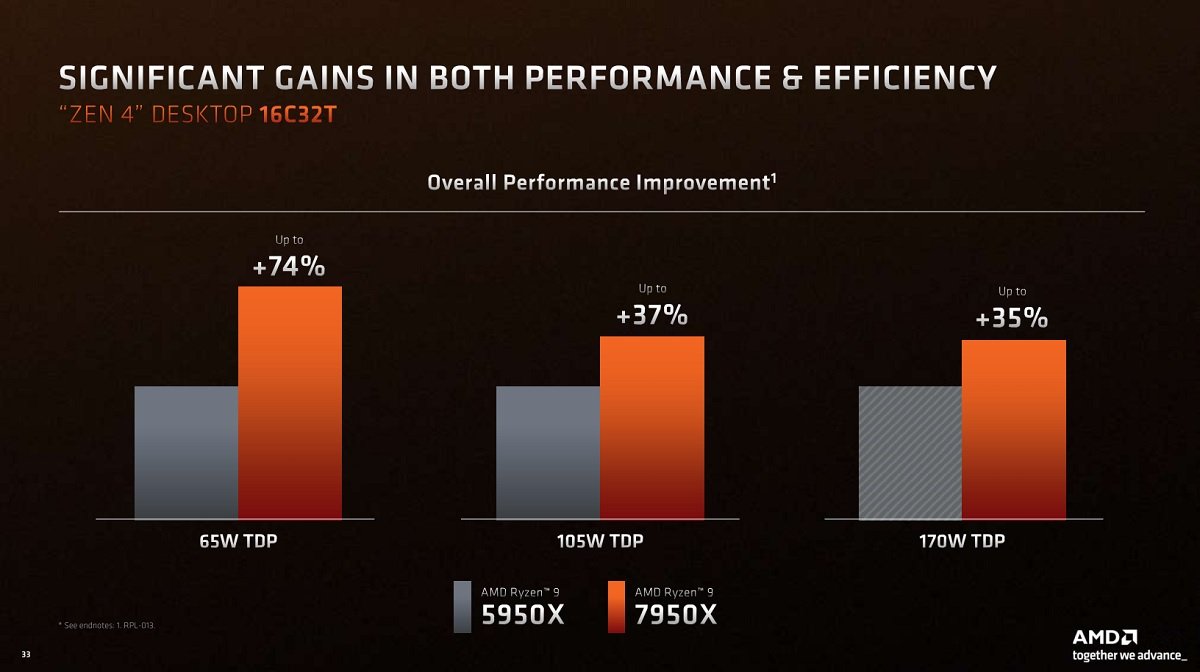
There are some concessions, however, as these CPUs now have a maximum TDP of 170W – a 65W increase of the previous flagship. Peak power consumption is allowed to hit 230W if needed to get the maximum amount of performance possible.
This increase in power requirements also requires additional cooling. The company recommends using at least a 240mm or 280mm AIO to cooldown its CPUs. The 7700X and 7600X can get away with tower coolers with their relatively lower TDP. Fortunately, existing AM4 coolers are compatible with the AM5 mount but you still want to double check with your manufacturer for compatibility.
Better cooling is needed as well for these CPUs due to Precision Boost Overdrive, which uses all the thermal headroom of the processor up until 95°c to maximize performance.
Surprisingly, the Ryzen 7000 series CPUs will come with integrated RDNA 2 graphics. They won’t be great for gaming as the integrated graphics only come with 2 Compute Units and 128 stream processors but they will support AV1 Decode, H.264 and HEVC Decode/Encode, DisplayPort 2.0, HDMI 2.1, USB-C, 4K60Hz, and even hybrid graphics.

After 6 years, AMD finally moving onto the new AM5 socket with the Ryzen 7000 series processors. They are breaking their own mold this generation as they are now using land grid array (LGA) from their traditional pin grid array (PGA) design. AM5 has 1718 pins while still retaining the same package size, which means that there are more pins on the CPU instead of the being in the motherboard like before.
The new socket allows a 2-way communication between the processor and voltage regulators, which allows AMD to increase the TDP higher than before. This results in higher boost speeds but also significantly increased power consumption than before.

4 motherboard chipsets are being introduced this generation – X670E, X670, B650E, and B650 – to encompass the flagship, midrange, and entry-level segments in the market. X670E is placed at the top-end of the scale supporting two PCIe 5.0 x16 slots and a PCIe 5.0 NVMe SSD slot. X670 has the option to come with various configurations of PCIe 5.0 or PCIe 4.0 x 16 slots depending on the manufacturer while retaining the PCIe 5.0 NVMe slot. B650E and B650 are the budget option for enthusiasts packing a PCIe 5.0 or 4.0 x16 slot, depending on the manufacturer, and a PCIe 5.0 M.2 slot.
The platform will exclusively support DDR5 memory and both them and the motherboards can be pretty expensive, which leads to a much higher price for entry for enthusiasts. There is currently no plans for backwards compatibility for DDR4 memory unlike Intel that has supported DDR4 on both their 12th Generation and 13th Generation processors and motherboards.
AMD is planning to support the AM5 socket at least until 2025 according to their Computex 2022 keynote. This means that motherboards will still be compatible with at least some of the future CPU releases from the company but this may change in the future.

The Ryzen 7000 series processors will transition to exclusively run on DDR5 memory unlike Intel which still support DDR4 kits. This time around, AMD finally has their own answer to XMP – AMD EXPO. This removes the burden from consumers from choosing what is the right memory kit for their build.
AMD EXPO is a self-certification for manufacturers to guarantee compatibility for Ryzen 7000 CPUs. The company does not require licenses or royalty fees for RAM kits with EXPO certification, which means that pricing should still be on par or lower than other kits. They do require manufacturers to publish a self-certification report with components, full timing table, and stability/hardware information for EXPO memory kits.
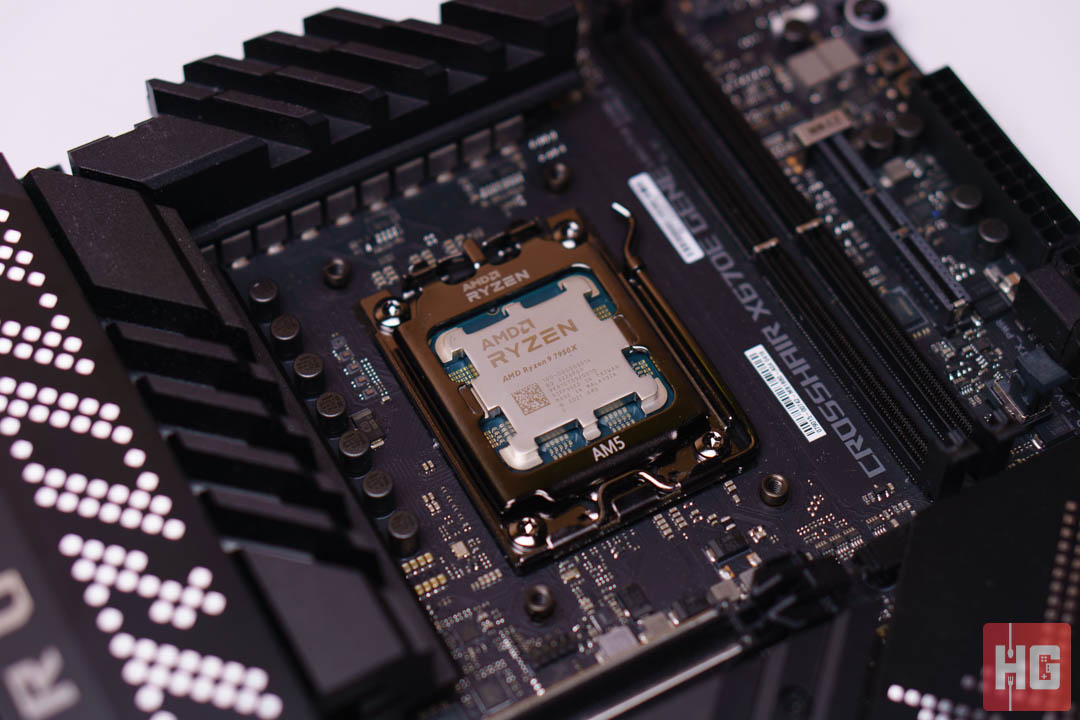
As mentioned, the AMD Ryzen 9 7950X is the flagship of the Ryzen 7000 series. Packing a 16-core, 32-thread setup, clock speeds can boost up to 5.7GHz. It has a rated TDP of 170W but its new socket allows it to use up to 230W depending on the workload. It doubles the L2 cache per core totaling 80MB cache including L3 cache.
Overclocking the 7950X is just like before. You’ll need to locate the multiplier and voltage option on your motherboard and raising each one of them until you hit an equilibrium where the system runs without crashing.

In our testing, we were able to reach 5.3GHz on all cores at 1.275v before hitting the thermal limit of our cooler at around 98°c. There is still some headroom available on the CPU but it will be running at more than 100°c, which isn’t optimal for prolonged use. You can also get additional performance by turning on Precision Boost Overdrive via the BIOS.
We used the following components to test the performance of the AMD Ryzen 9 7950X:
The processor was tested using synthetic benchmarks, compression and decompression tests, rendering programs, and gaming both triple A and competitive titles.


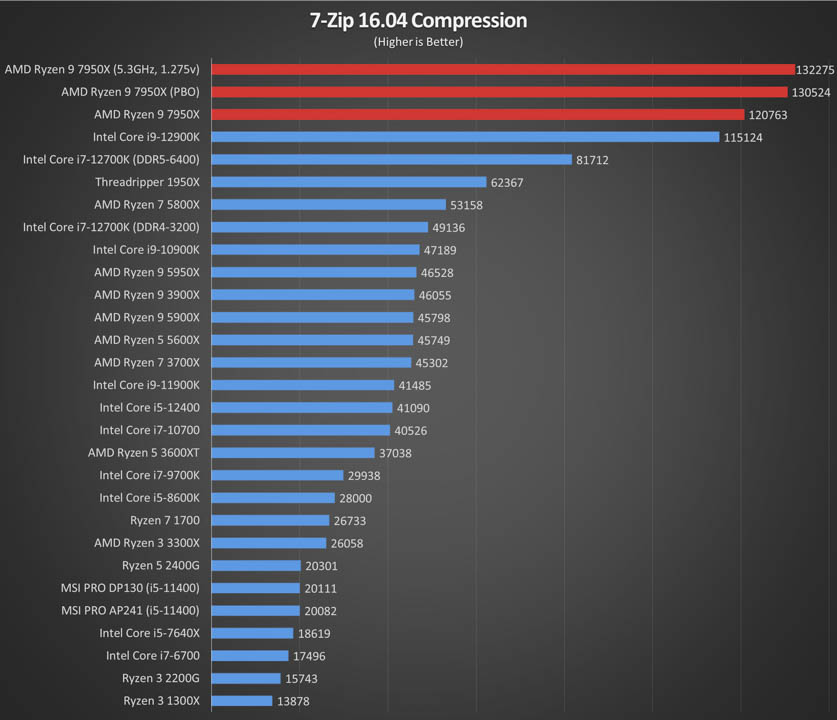

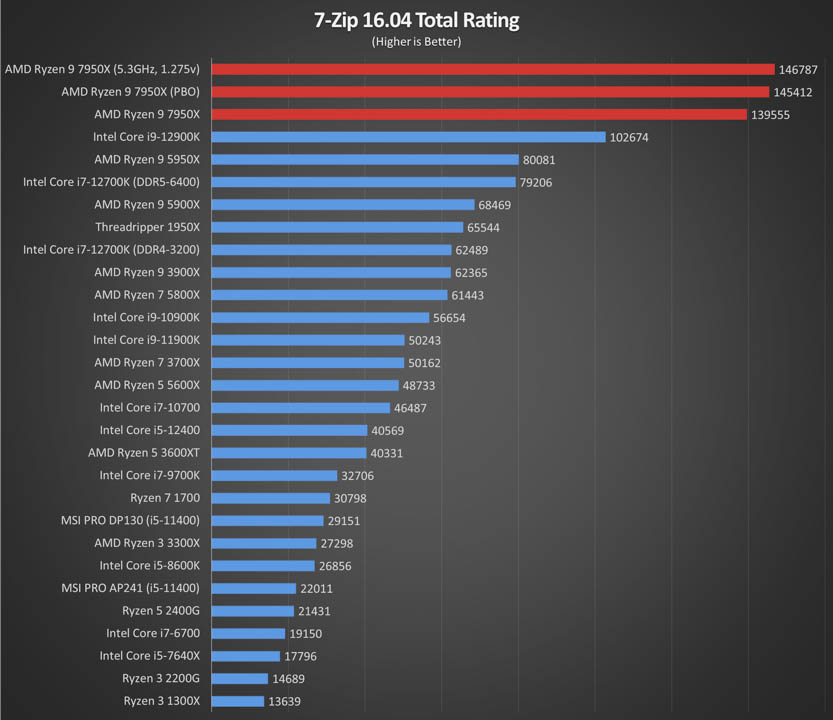





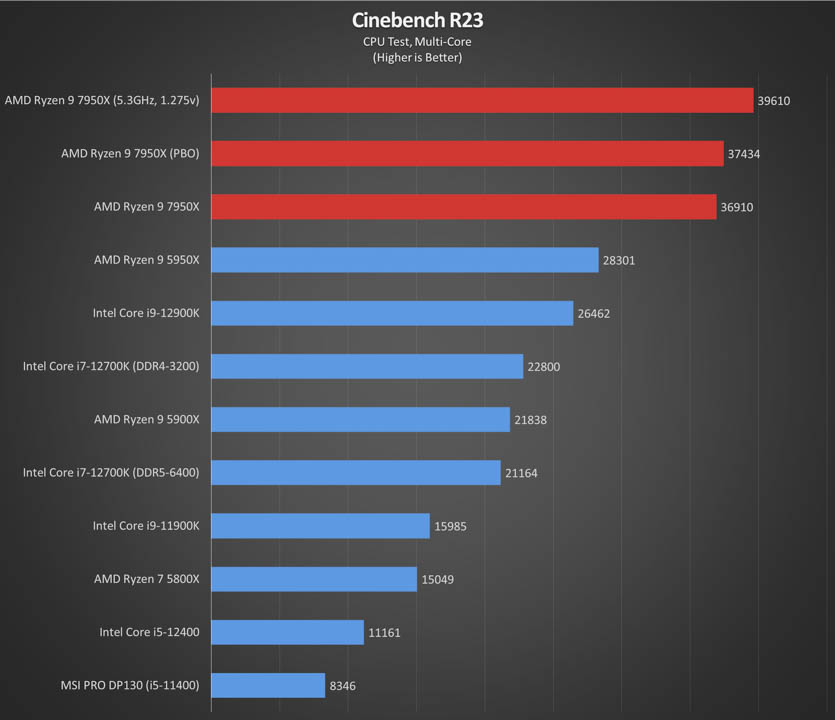

The AMD Ryzen 9 7950X has plenty of performance under the hood especially in multi-core workloads. It has significantly more horsepower when compared to last generation’s 5950X in both single-threaded and multi-threaded programs. Compression is decompression receive gains as well thanks to the platform’s native support for DDR5 memory, which is appreciably faster than DDR4 memory kits.
Intel, however, is still the king for single-threaded performance. Even the Intel Core i9-12900K is able to pull ahead of the 7950X by some margin in several benchmarks. Their lead, however, is taken back by AMD’s Ryzen 7000 flagship in multi-core performance as all of its cores are “P-cores” instead of Intel’s hybrid CPU approach that mixes E-Cores and P-Cores.
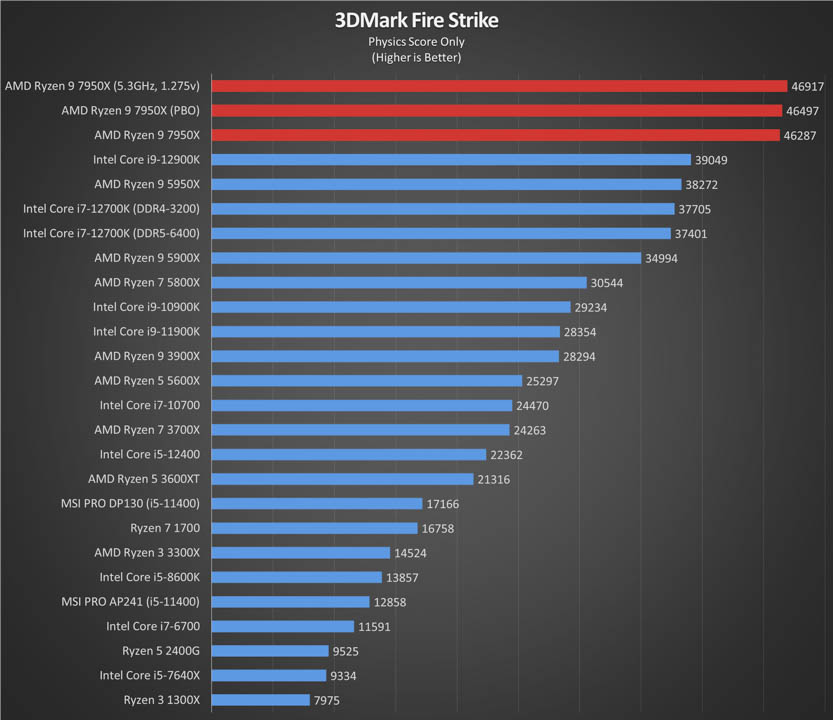


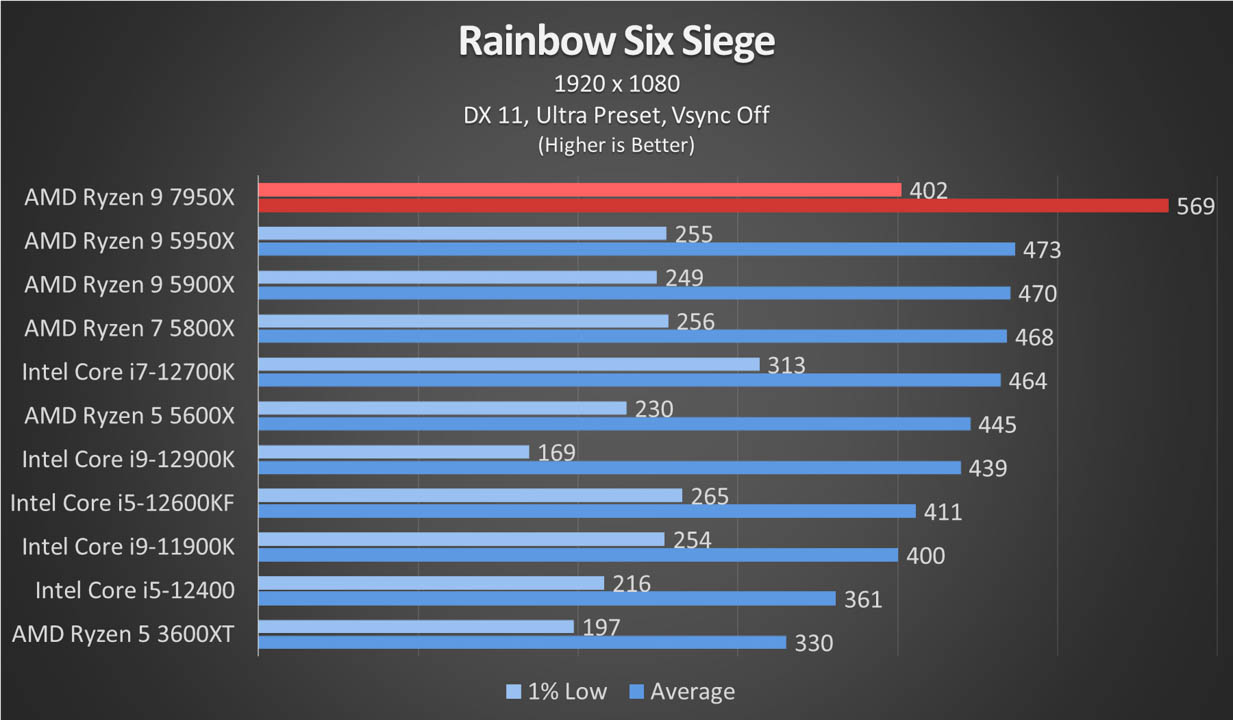

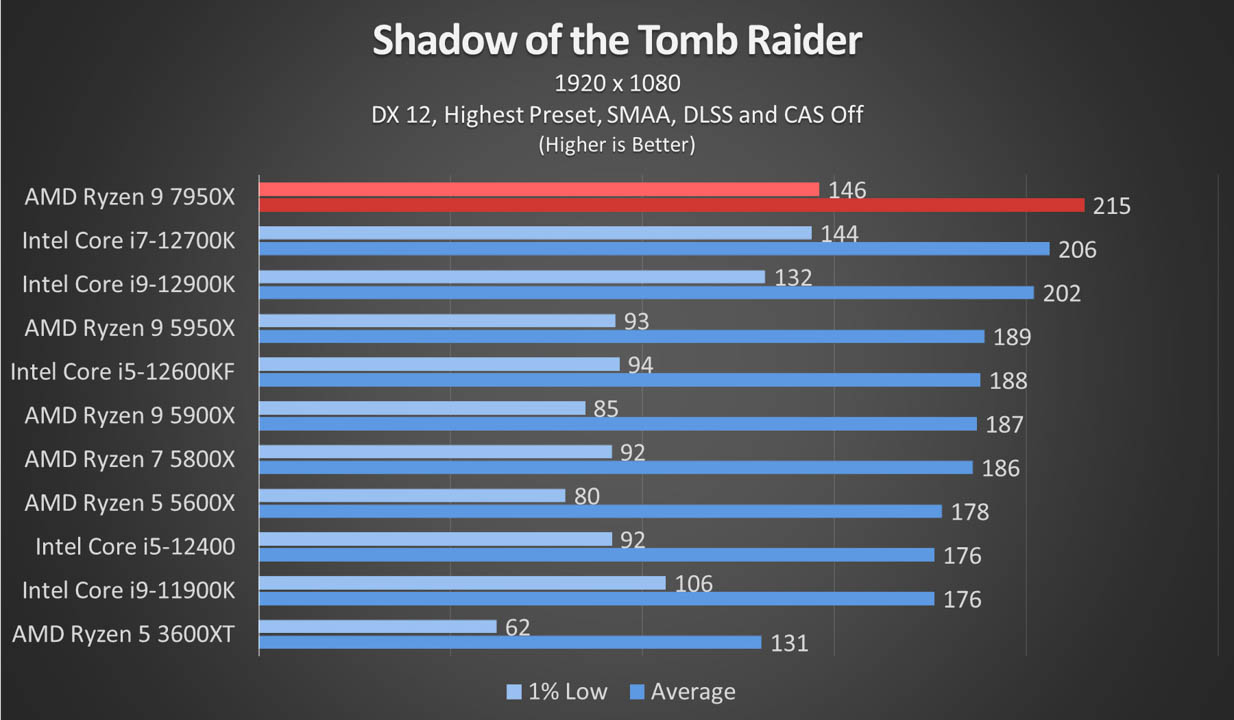
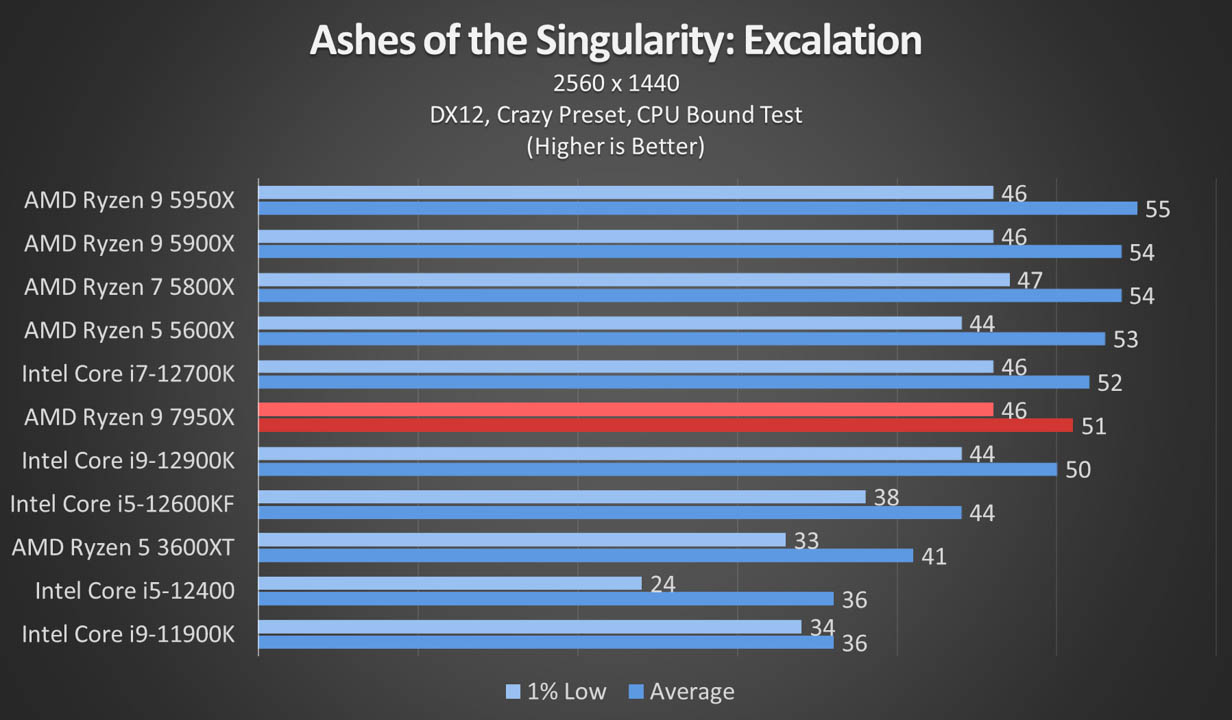
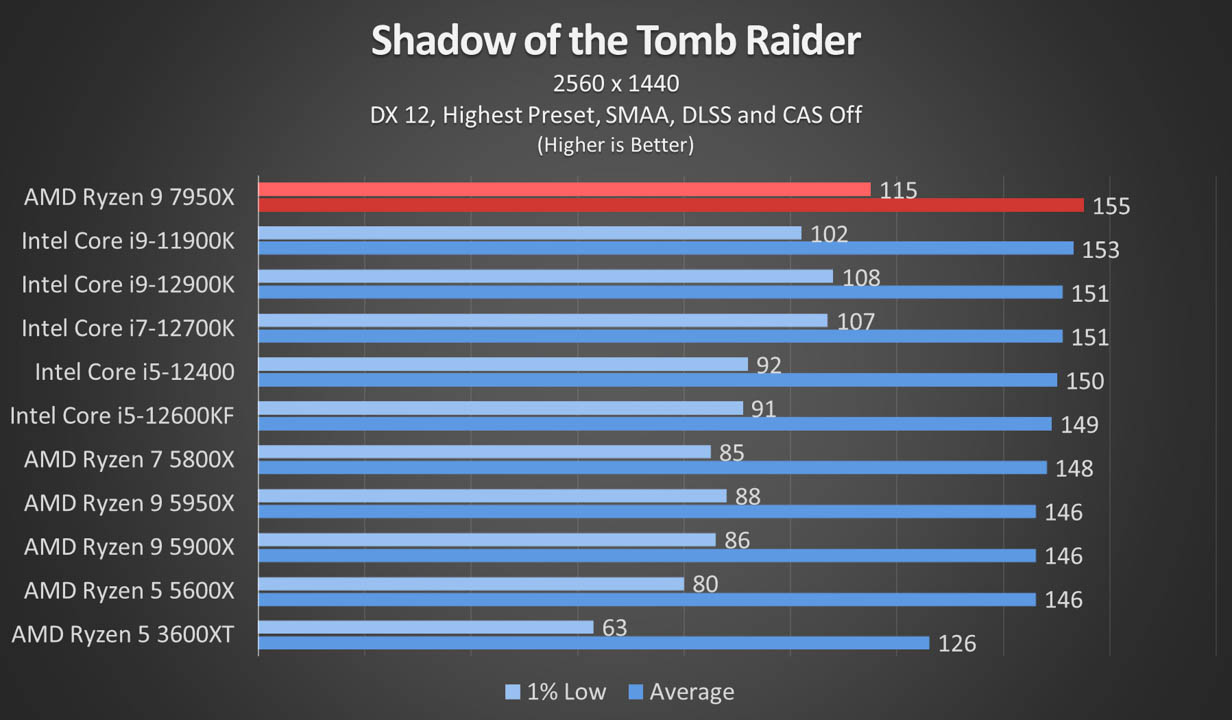
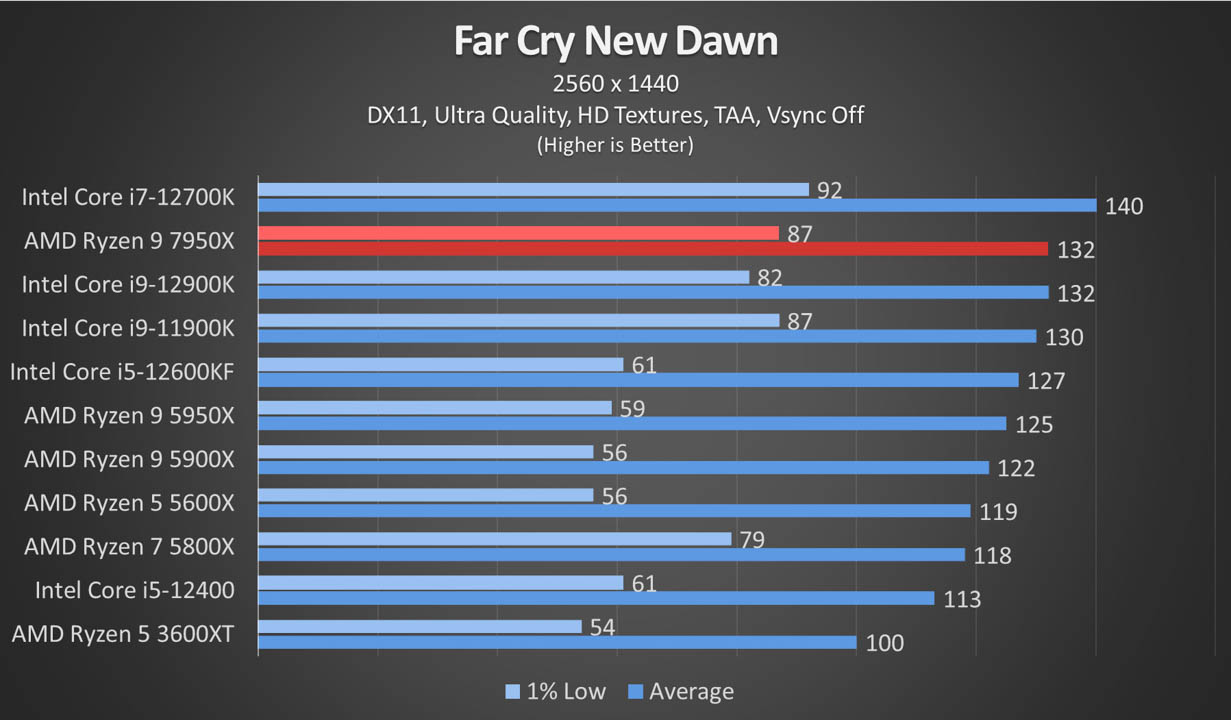

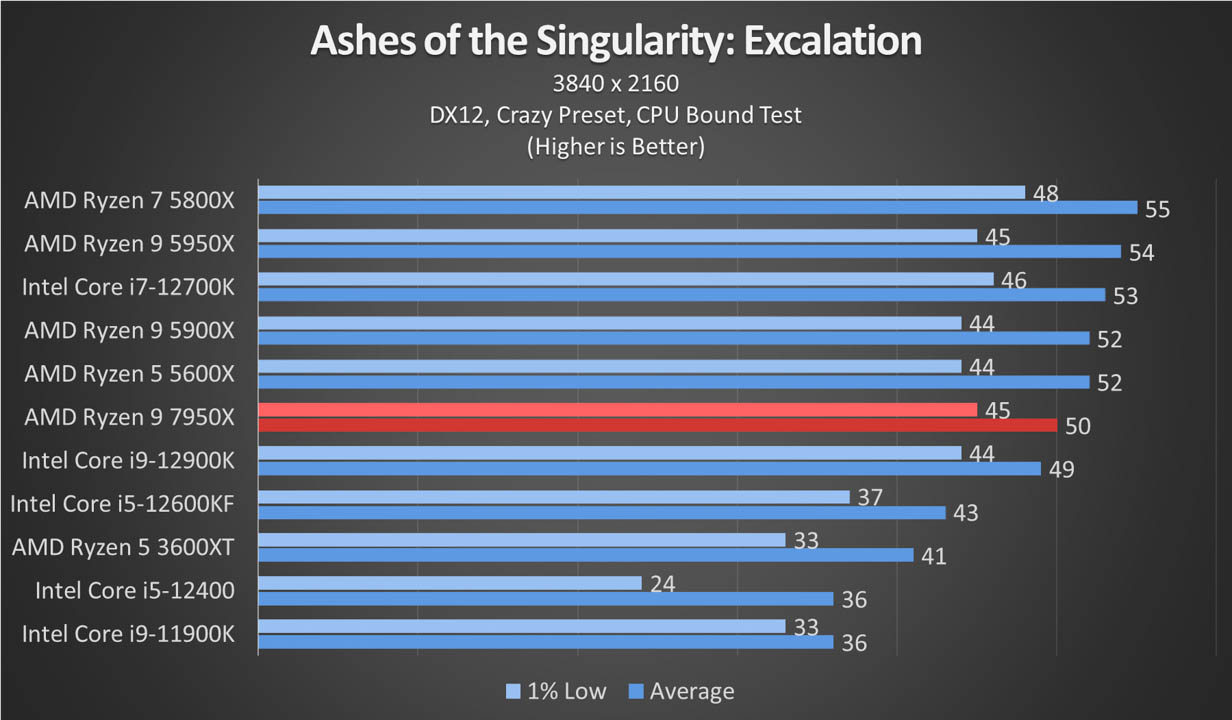

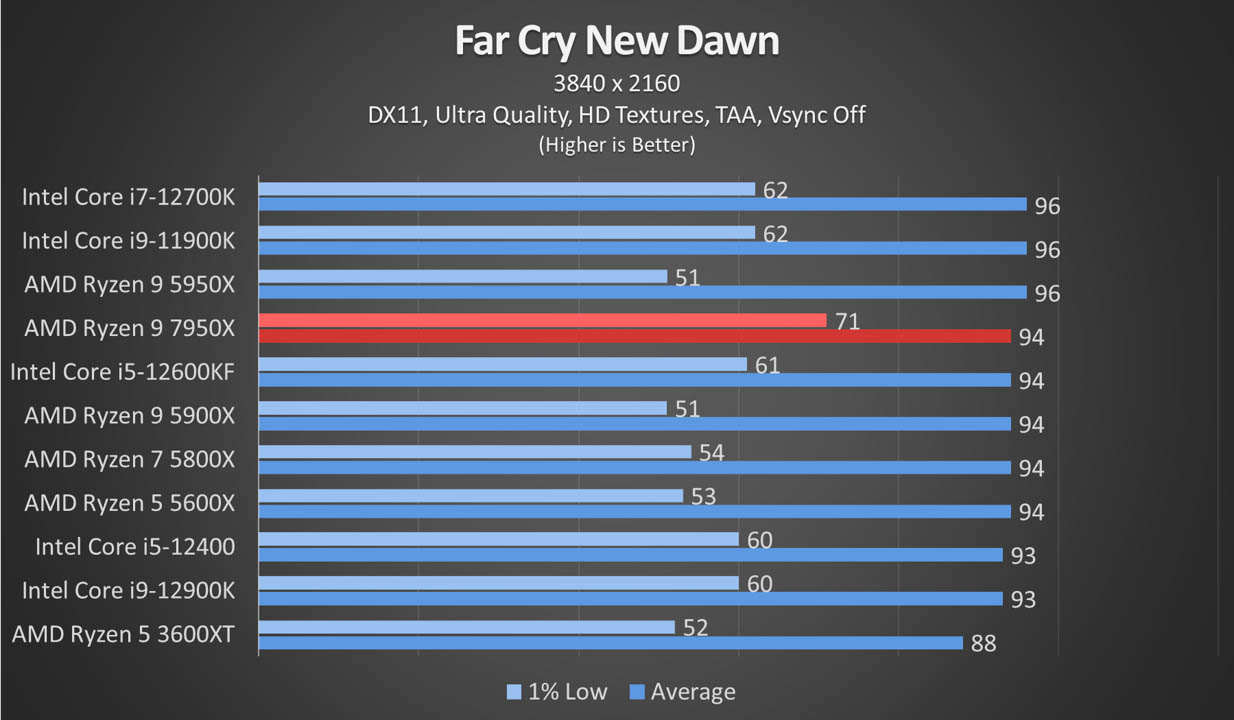
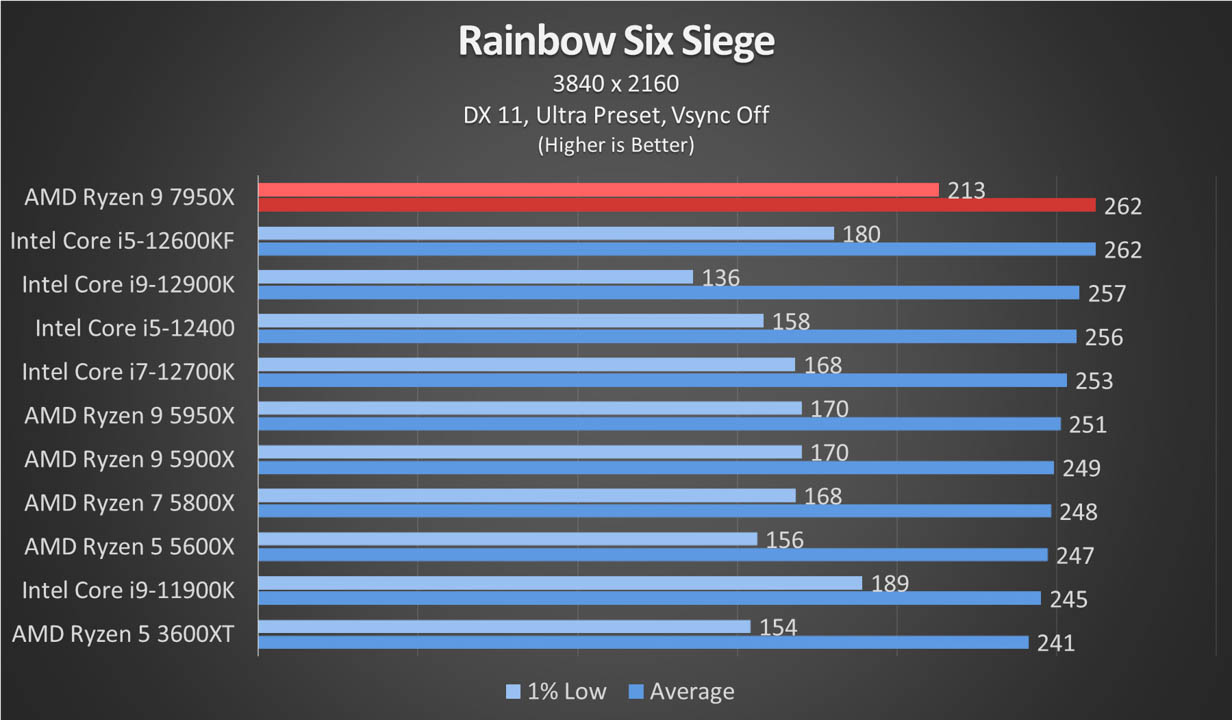
In most cases, 4K gaming is still GPU bound instead of being reliant on the CPU. Intel has an advantage over games that utilize fewer but high-performance cores, like older DX11 games, but AMD gets ahead in most games that use multi-threaded workloads such as titles using DX12, which is common nowadays.
Titles like Rainbow Six Siege, specifically, takes advantage of the 7950X’s fast multi-core performance to allow faster framerates reaching up to more than 550fps when paired with a proper GPU.

AMD designed the Ryzen 7000 series to get more power and run much hotter than previous generations. The CPU gets consistently to the 98°c before backing down to safer levels in order to boost clock speeds. At stock and at PBO turned on, the CPU will consistently rest at an average of 94°c boosting on and off the 5.7GHz target with clock speeds averaging just above 5.0GHz when the whole run is considered.

As for power consumption, the processor will reach its maximum target of 230W on heavy workloads. For gaming, it will be comfortable sticking to its rated 170W TDP. While overclocked at 5.3GHz on all cores at 1.275v, the CPU is able to pull in more than 240W of power but the heat might be intolerable on some coolers.
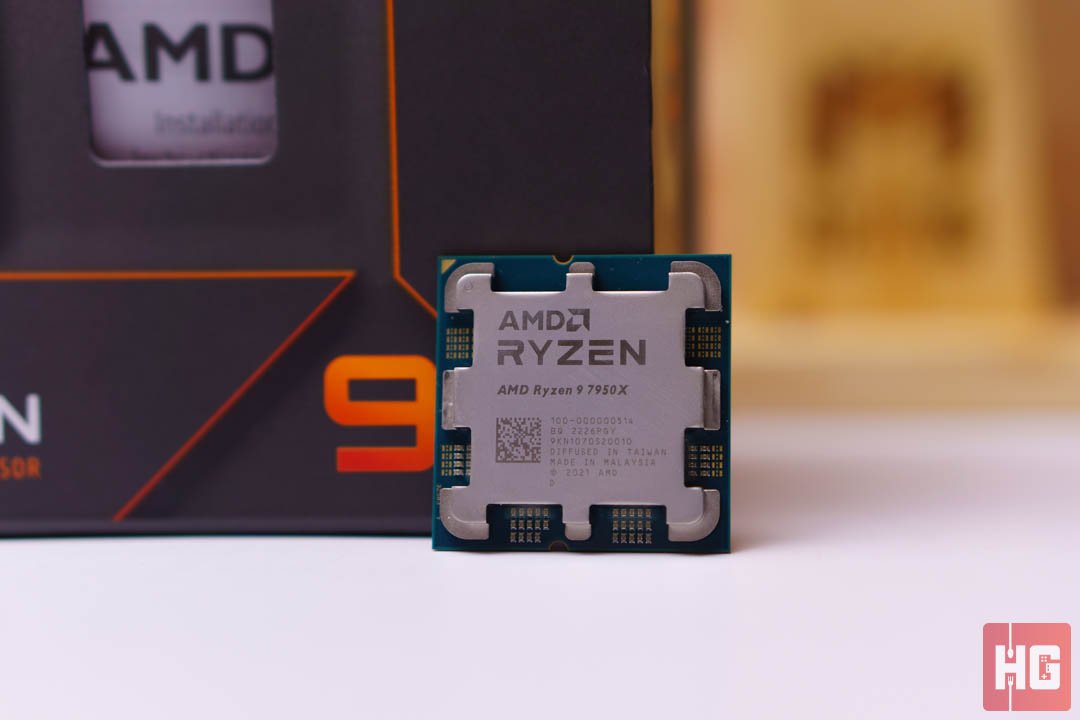
The AMD Ryzen 9 7950X is simply at the top of its class when it comes to performance. AMD has made strides to get even more from CPUs nowadays and that reflects on the benchmarks. The 16-core, 32-thread CPU can do everything from gaming to heavy creative workloads easily.
There are some concessions. The increased power consumption is noticeable compared to last generation and it seems to become the trend in the future. The increased power envelope also needs a quite powerful cooler to temper down the heat produced by the chip.
There’s also the whole platform to consider. Upgrading to an AM5-based PC can be costly with the 7950X already hitting PhP 46,000 by itself. The cheapest X670 motherboard currently is priced at around PhP 18,000 while DDR5 kits are significantly pricier than its DDR4 counterparts. Of course, you’ll need a powerful enough PSU that can deliver the wattage needed not only by the CPU but the GPU for your build.

Regardless of its power consumption and cost of the platform, the AMD Ryzen 9 7950X is nearly unparalleled in its overall performance. It is currently the top-dog when it comes to consumer desktop processors and is a coveted CPU for those who need the best performance possible, which is why we are giving it our seal of approval.
The AMD Ryzen 9 7950X is priced at PhP 46,000 in the Philippines. It is now available in all AMD authorized retail stores nationwide alongside other Ryzen 7000 series processors.
